What is electroless nickel plating and how does it work?
Want to learn about electroless nickel plating? Here’s a guide to using the post-processing technique, how it works, its common industrial uses, and more.
Read articleYou’ve come to the right place. Hubs is now Protolabs Network.
The same broad capabilities, exceptional quality and competitive pricing under a new brand.






EN
What surface finishes are available for CNC machining? You can apply post-processing and surface finishes to improve the surface roughness, cosmetic properties and wear resistance of metal parts. Learn about the most common ways to finish CNC machined parts, and how to select the best methods for your applications.
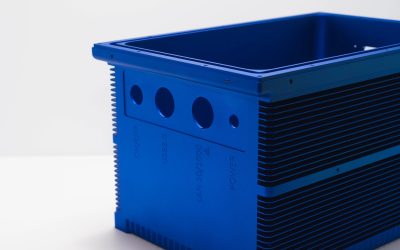
CNC machining is a subtractive manufacturing process that can produce parts with tight tolerances (up to ± 0.025 mm) and fine detail from an enormous range of metals and plastics. However, due to CNC’s subtractive nature— in contrast with 3D printing and additive manufacturing—parts often come off milling and turning machines with visible tool marks.
This is where surface finishing comes in. Applying post-processing and the right surface finishes can improve surface roughness, cosmetic and visual properties and wear resistance of CNC-machined parts. Surface finishing, applied correctly, improves functionality and aesthetics, and in many cases both.
In this article, we discuss the most common surface finishes for metal CNC parts to help you select the right ones for your application.
Did you know we offer local sourcing for CNC machining?
Here are the most common surface finishes available on our platform. Please note that these are all for metal parts.
| As machined | As machined parts—or parts that come right off the machine—have minor visible tool marks and a standard surface roughness (Ra) is 3.2 μm. Surface finish requirements can be increased to 1.6, 0.8 and 0.4 μm. |
| Bead Blasting | Bead blasted parts have a matte finish with a light texture. It’s mainly used to improve a part’s visual appearance. |
| Anodizing Type II (clear or color) | Anodizing (Type II) adds a corrosion-resistant, ceramic layer to the surface of the part. Only available for aluminum and titanium, anodized parts can be dyed several colors. |
| Anodizing Type III (hardcoat) | Anodizing (Type III) adds a wear- and corrosion-resistant ceramic layer to the surface of the part. It offers greater protection than Type II and can be dyed different colors. Available only for aluminum and titanium. |
| Powder coating | Powder coating adds a wear- and corrosion-resistant finish to the surface of the parts. It has higher impact resistance compared to anodizing, comes with a large range of colors, and can be applied to any metal. |
All CNC machined parts will have marks that follow the path of the cutting tool used during machining. The quality of the surface is measured in terms of average surface roughness (Ra). Ra is a measure of the average deviation of the machined profile from the ideal surface.
The standard as-machined surface roughness is 3.2 μm (125 μin). A finishing cutting pass can be applied to reduce the roughness of a surface down to 1.6, 0.8 or 0.4 μm (63, 32 or 16 μin). This will increase the cost of producing a part, as extra machining steps and tighter quality control are required.
As machined parts can be smoothed or polished to improve their surface quality and visual appearance by reducing their surface roughness. Smoothing and polishing will remove some material affecting the dimensional tolerances of the part.
Pros
Cons
| Finish | ★ ★ ☆ ☆ ☆ |
| Tolerances | ★ ★ ★ ★ ★ |
| Protection | ★ ☆ ☆ ☆ ☆ |
| Cost | $ |
| Suitable for | Any material |
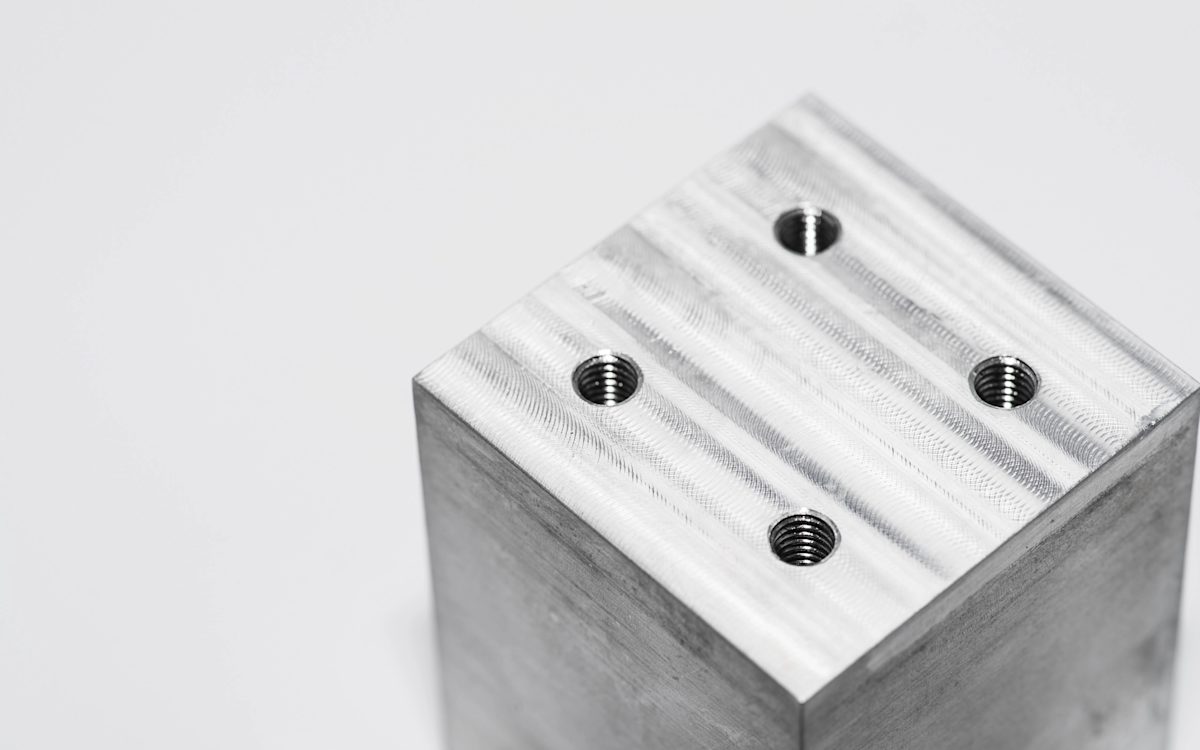
Bead blasting adds a uniform matte or satin surface finish to a machined part, which removes the tool marks. It works by bombarding your part with small glass beads using a pressurized air gun. This removes excess material and smoothes out the surface of the part. Critical surfaces or features (like holes) can be masked to avoid any dimensional changes.
In general, bead blasting is used more for part aesthetics than functionality. It is a manual process, so the result will depend to some extent on the skill of the operator. The amount of air pressure and the size of the glass beads are the main process parameters. Glass beads come in different sizes (from course to very fine) just like sandpaper comes in different sizes and grades. Protolabs Network generally bead blasts parts with a grit size of #120.
Pros
Cons
| Finish | ★ ★ ★ ☆ ☆ |
| Tolerances | ★ ★ ★ ☆ ☆ |
| Protection | ★ ☆ ☆ ☆ ☆ |
| Cost | $$ |
| Suitable for | Any material |
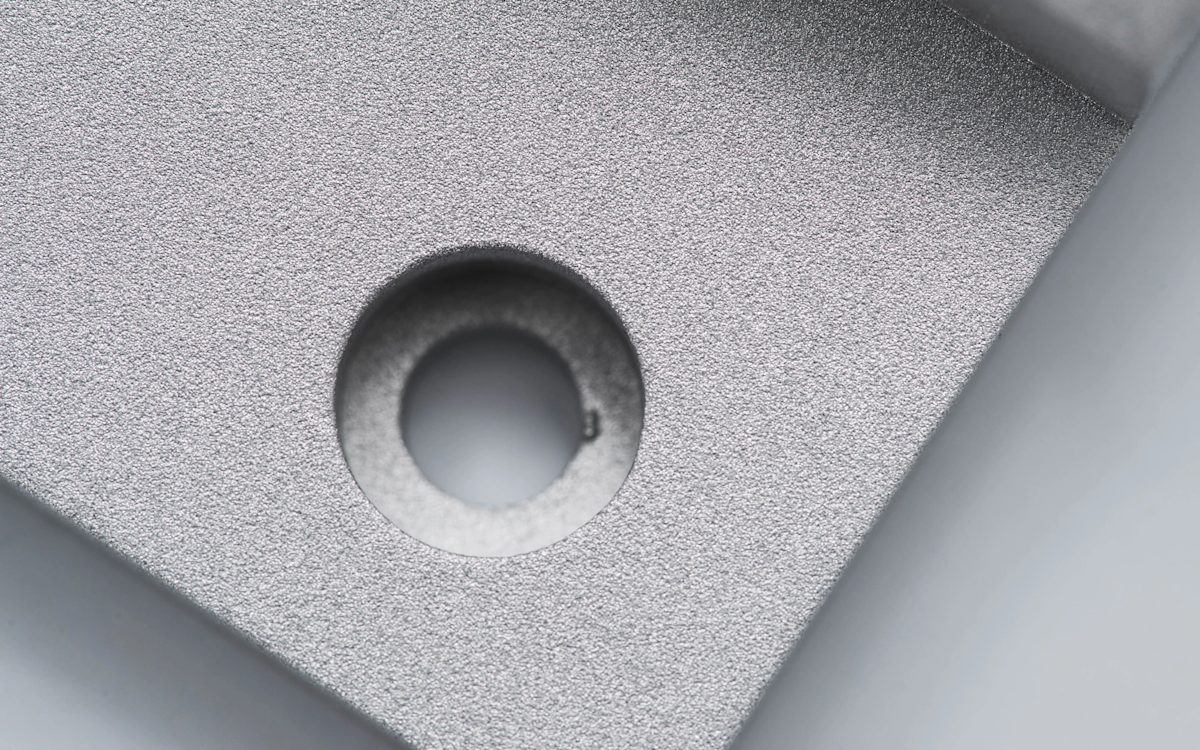
Anodizing adds a thin ceramic layer to the surface of metal parts. This layer protects against corrosion and wear. The anodic coating is electrically non-conductive, has high hardness (type III) and can be dyed in different colors. Anodizing is only compatible with aluminum and titanium.
With Type II & Type III anodizing, the part is submerged in a diluted sulfuric acid solution and an electric voltage is applied between the component and the cathode. An electrochemical reaction consumes the material on a part’s exposed surface, converting it into hard aluminum or titanium oxide. A mask can be applied to surfaces with critical dimensions (like threaded holes) or surfaces that must remain electrically conductive to prevent them from anodizing. The anodized parts can also be dyed various colors before sealing (such as red, blue, black or gold).
By varying the electric current, anodizing time and consistency and temperature of the solution, coatings of different thicknesses and densities are created.
Anodizing Type II is also called "standard" or "decorative" anodizing and can produce coatings with a thickness of up to 25 μm. The typical coating thickness depends on the color and can vary between 8-12 μm for parts dyed black and 4-8 μm for clear (un-dyed) parts.
Type II anodizing is mainly used to produce parts with a smoother surface and provides good corrosion resistance and limited wear resistance.
Anodizing Type III is also called "hardcoat" anodizing and can produce coatings up to 125 μm thick. If not otherwise specified, the typical type III anodic coating is 50 μm thick.
Type III anodizing produces thick, ceramic coatings with high density that provide excellent corrosion and wear resistance, suitable for functional applications. Be aware that it requires closer process control compared to type II anodizing (higher current density and constant solution temperature near 0 degrees Celsius), so the cost is higher.
The anodic coating grows in both directions equally. This means that a 50 μm thick coating will protrude approximately 25 μm above the original surface and that a cylinder with 1 mm diameter before anodizing, will have a diameter of 1.05 mm after anodizing. More details on anodizing can be found in the MIL-A-8625 standard.
Pros
Cons
| Finish | ★ ★ ★ ★ ★ |
| Tolerances | ★ ★ ★ ★ ☆ |
| Protection | ★ ★ ★ ☆ ☆ (Type II); ★ ★ ★ ★ ☆ (Type III) |
| Cost | $$$ (Type II); $$$$ (Type III) |
| Suitable for | Aluminum & titanium |
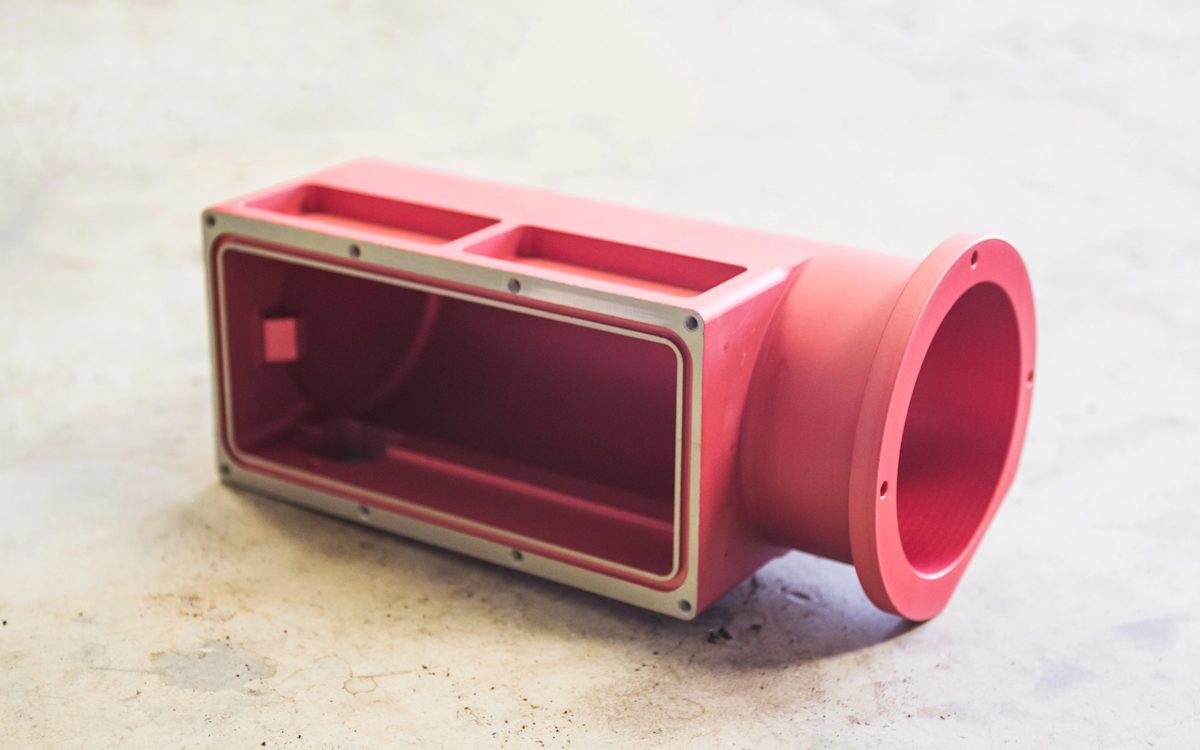
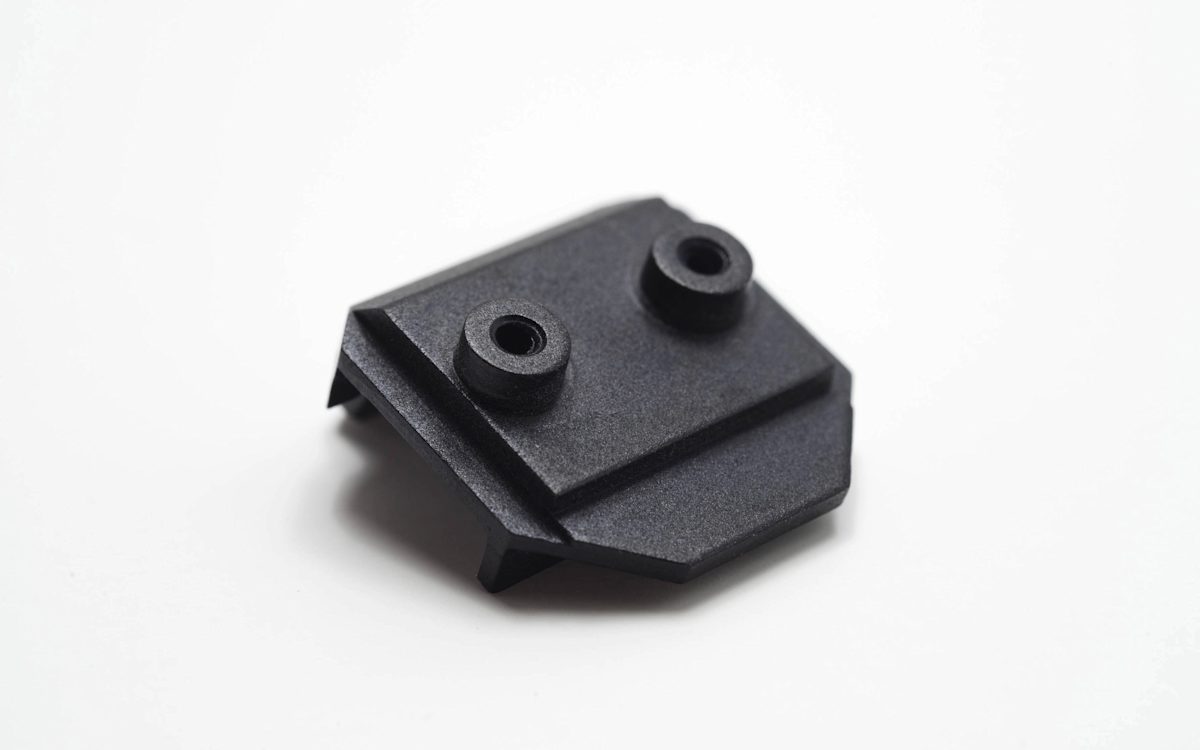
Powder coating adds a thin layer of protective polymer to the surface of the part. Powder coating is a strong, wear-resistant finish that is compatible with all metal materials and can be combined with bead blasting to create parts with smooth and uniform surfaces and excellent corrosion resistance.
The powder coating process is similar to spray painting, but the "paint" in question is a dry powder instead of a liquid. The parts are first primed with an optional phosphating or chromating coating to increase their corrosion resistance, then coated with dry powder using an electrostatic "spray" gun and then cured at high temperature (usually in an oven at 200 degrees Celcius).
Multiple layers can be applied to create a thicker coating and the typical thickness varies from approximately 18 μm up to 72 μm. A wide range of colors is available.
Pros
Cons
| Finish | ★ ★ ★ ★ ★ |
| Tolerances | ★ ★ ★ ☆ ☆ |
| Protection | ★ ★ ★ ☆ ☆ |
| Cost | $$$ |
| Suitable for | Any material that can survive the thermal curing process |
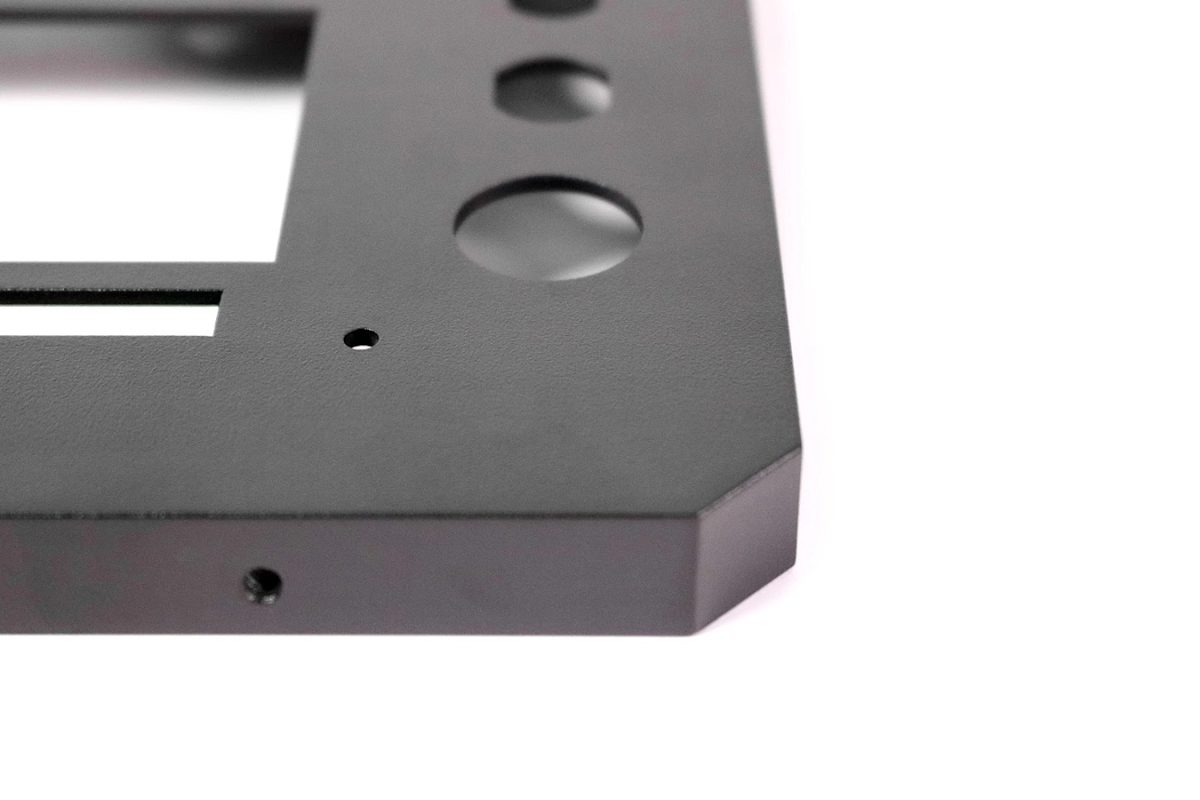
Every surface finish has its advantages and disadvantages, so choosing the right one depends on what features match your part requirements and application.
It’s essential to evaluate the functional and aesthetic characteristics you need, and to consider how your part will interact with adjoining components. Whether or not your part will be subject to repeated or intense friction may sway your decision.
Also, remember to take into account your part operational environment. You may believe your part doesn’t need robust resistances, but the environmental facts might require a more intensive surface finish than you previously thought during the design phase.
Bead blasting: This surface finish works well if you’re not worried about dimensional tolerances. It leaves the part with a matte uniform finish.
Anodizing (type II): Use this to give your aluminum and titanium parts a protective layer that’s also cosmetic—parts come out with natural matte colors.
Anodizing (type III): Perfect for advanced engineering applications, anodizing (type III) gives parts high wear resistance and surface hardness.
Powder coating: Use this surface finish for applications where you need high-impact strength. Powder coating is also suitable if your parts can’t be anodized.
Need CNC parts machined fast? We've got 5 day lead times

Surface finishing is the last phase of the CNC machining process. You can use surface finishing to remove defects and flaws from parts and improve their appearance, boost resistances from certain types of wear and tear, adjust capacity to conduct electricity and more.
Applying surface finishes to your part protects it from wear and tear and improves it cosmetically while maintaining or even improving its functionality.
The surface finishes available on the Protolabs Network platform include bead blasting, anodizing (type II & type III), powder coating, brushed + electropolished, brushing and many others.
Surface finishing is any post-processing applied to a part after machining, while surface roughness is a method of quantifying the number of irregularities on a surface. The Ra parameter represents the average of all surface heights measured across a given surface area.
In many cases, there are steps between taking your part off the machine and applying a surface finish. For instance, you may need to mask the part to protect surfaces or holes, as certain finishes augment part thickness (extra material layers). This can interfere with threaded holes and tight tolerances.
You can combine multiple types of surface finishes to utilize varying properties. Prior to anodizing a part, for instance, you can bead blast it to achieve a smoother, matte finish.
Yes, there is. For stainless steel and tool steels, one equivalent process is black oxide, which means coating ferrous materials with iron oxide. This process reduces light reflection and adds thickness, reducing corrosion and friction thanks to the additional oil or wax (these also make the material water resistant).

Want to learn about electroless nickel plating? Here’s a guide to using the post-processing technique, how it works, its common industrial uses, and more.
Read article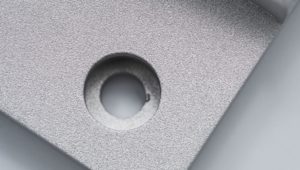
Want to learn about media blasting? Here’s a guide to using the post-processing technique, how it works, its common industrial uses, and more.
Read article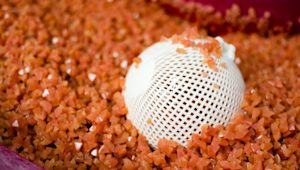
Find out about the range of surface finishes and materials that make for aesthetically pleasing custom parts.
Read article
Passivation is a chemical process used to enhance the corrosion resistance and durability of a metal. Find out how it works and when it’s a worthwhile addition to your custom parts.
Read article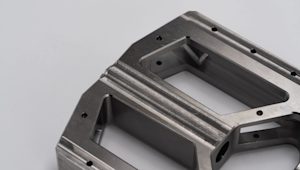

Learn about the differences between Type II and Type III anodizing, their benefits, typical applications, and how to choose the ideal surface finish for your part.
Read article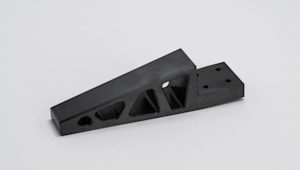
Want to learn more about black oxide coating? In this article, we’ll take a look at black oxide as a surface finish, its history, common applications, and more
Read article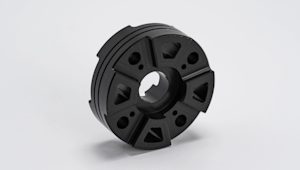
What is Delrin and why is it unique among the many manufacturing materials available? Delrin, or POM-H (homopolymer acetal), is used in CNC machining, 3D printing and injection molding to create durable, precise components. This article explores Delrin’s properties and how to get the most out of the material.
Read article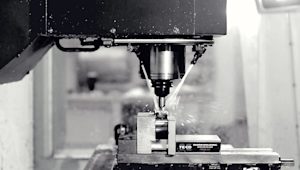
What is CNC milling and how does this subtractive manufacturing process work? This article explores how CNC milling machines work, what kinds of parts you can provide with milling and the best design practices for getting the most out of this type of CNC machining.
Read article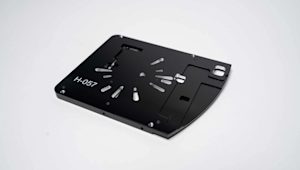
How do you add logos, lettering, serial numbers and other customized designs to your custom parts? Part marking is a cost-effective way to give parts those extra identifying and/or cosmetic details. Learn the common part marking techniques on the market today, including laser engraving and silk screening.
Read article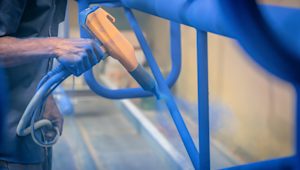
What is powder coating and in what cases should you select it as a finish for CNC-machined metal parts? This article covers the details of the powder coating process, as well as when to choose it for the best performance and quality.
Read article
What is anodizing? Anodizing is key to finishing parts made from aluminum and other metals. Learn how anodizing works and why it is an important part of CNC machining and manufacturing.
Read article
Want to learn about electroless nickel plating? Here’s a guide to using the post-processing technique, how it works, its common industrial uses, and more.
Read article
Want to learn about media blasting? Here’s a guide to using the post-processing technique, how it works, its common industrial uses, and more.
Read article
Find out about the range of surface finishes and materials that make for aesthetically pleasing custom parts.
Read article
Passivation is a chemical process used to enhance the corrosion resistance and durability of a metal. Find out how it works and when it’s a worthwhile addition to your custom parts.
Read article

Learn about the differences between Type II and Type III anodizing, their benefits, typical applications, and how to choose the ideal surface finish for your part.
Read article
Want to learn more about black oxide coating? In this article, we’ll take a look at black oxide as a surface finish, its history, common applications, and more
Read article
What is Delrin and why is it unique among the many manufacturing materials available? Delrin, or POM-H (homopolymer acetal), is used in CNC machining, 3D printing and injection molding to create durable, precise components. This article explores Delrin’s properties and how to get the most out of the material.
Read article
What is CNC milling and how does this subtractive manufacturing process work? This article explores how CNC milling machines work, what kinds of parts you can provide with milling and the best design practices for getting the most out of this type of CNC machining.
Read article
How do you add logos, lettering, serial numbers and other customized designs to your custom parts? Part marking is a cost-effective way to give parts those extra identifying and/or cosmetic details. Learn the common part marking techniques on the market today, including laser engraving and silk screening.
Read article
What is powder coating and in what cases should you select it as a finish for CNC-machined metal parts? This article covers the details of the powder coating process, as well as when to choose it for the best performance and quality.
Read article
What is anodizing? Anodizing is key to finishing parts made from aluminum and other metals. Learn how anodizing works and why it is an important part of CNC machining and manufacturing.
Read articleShow more
Show less